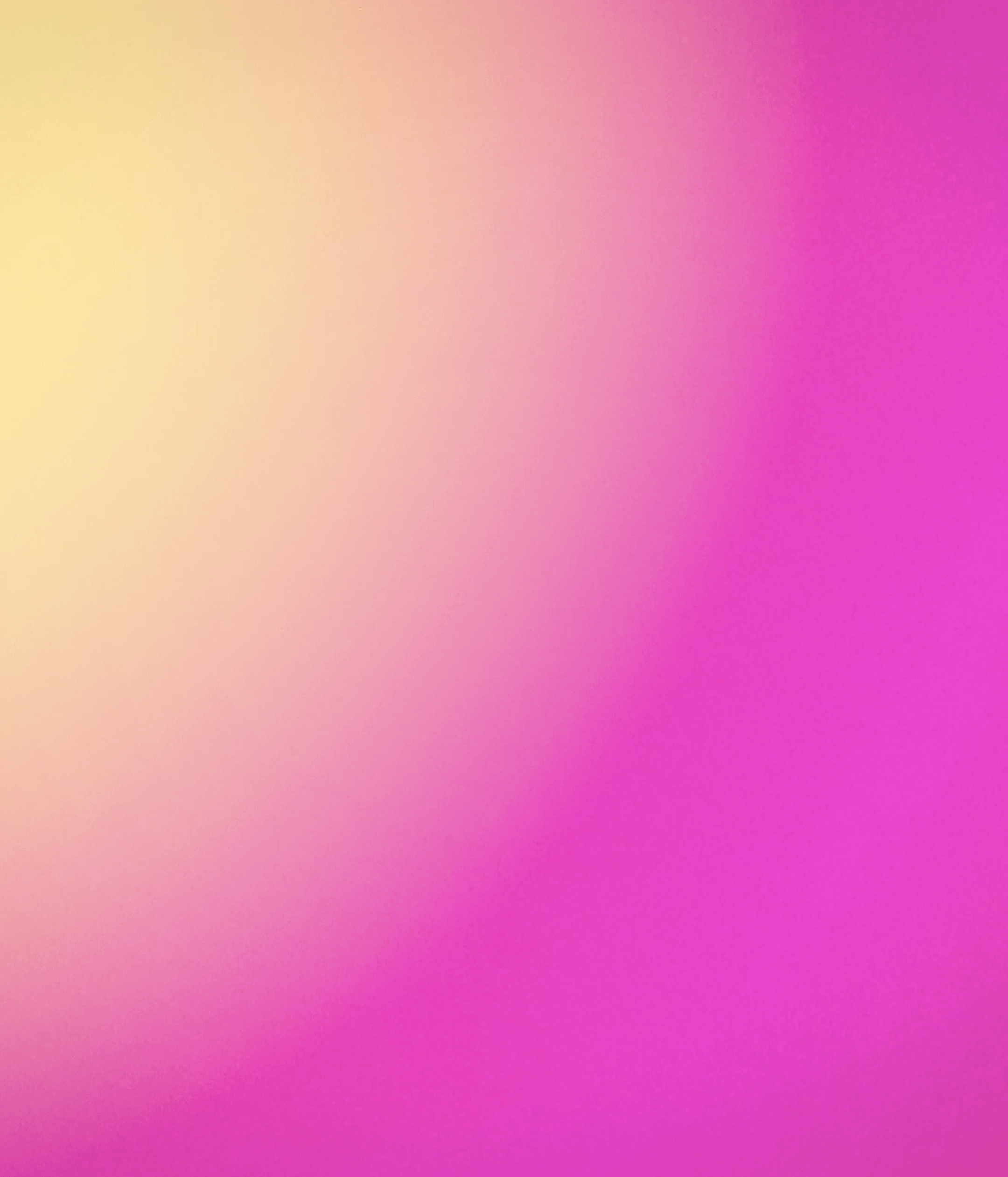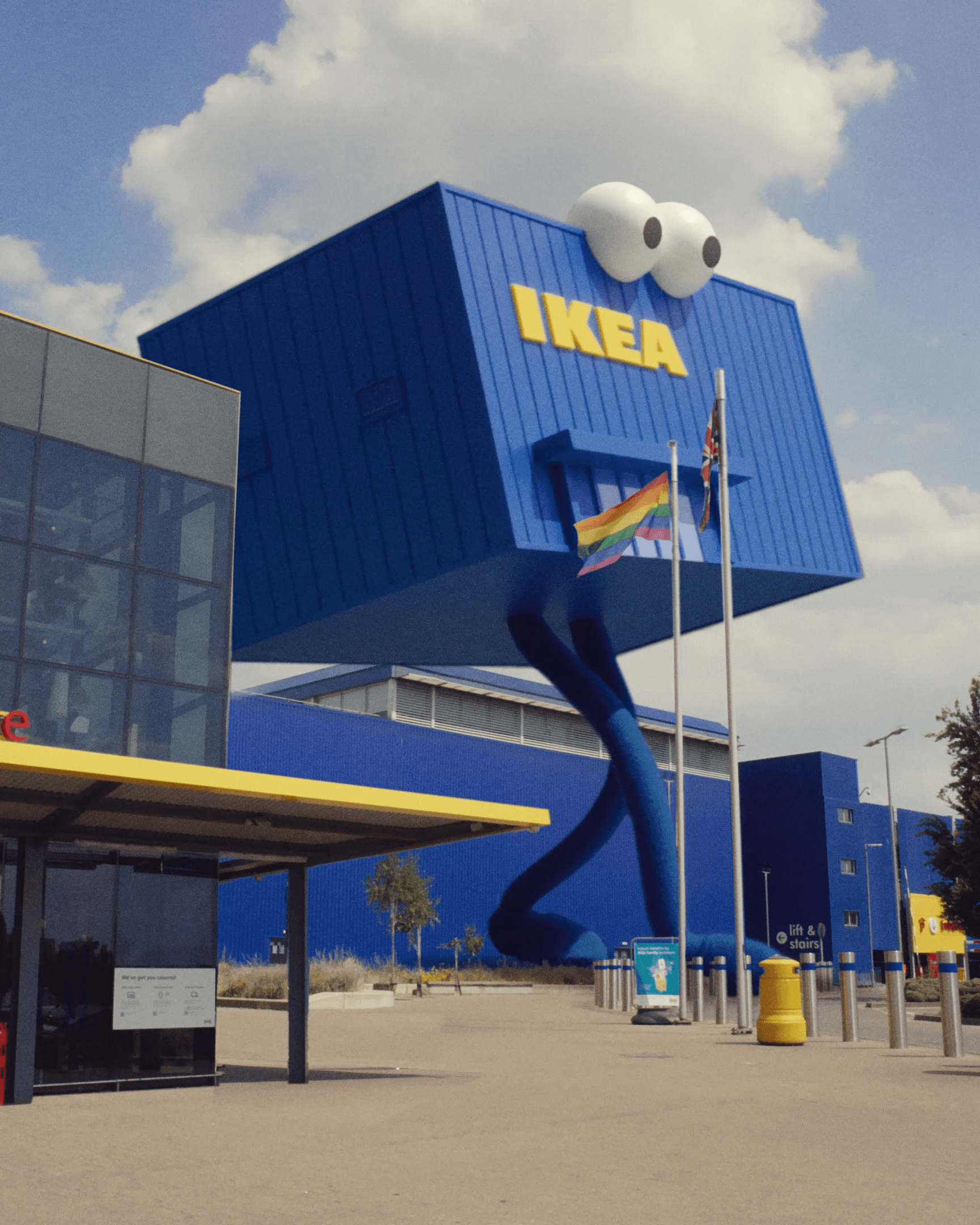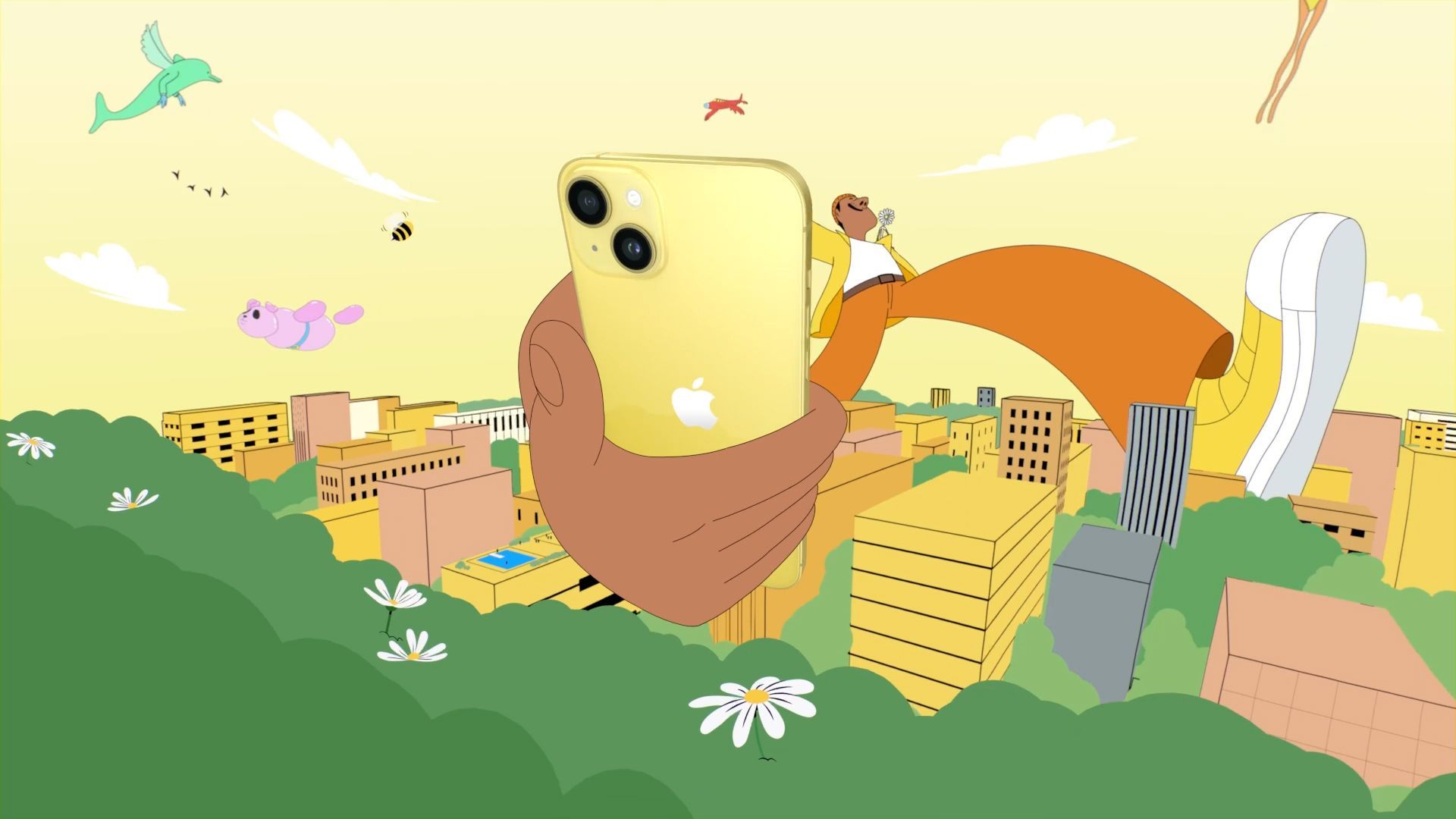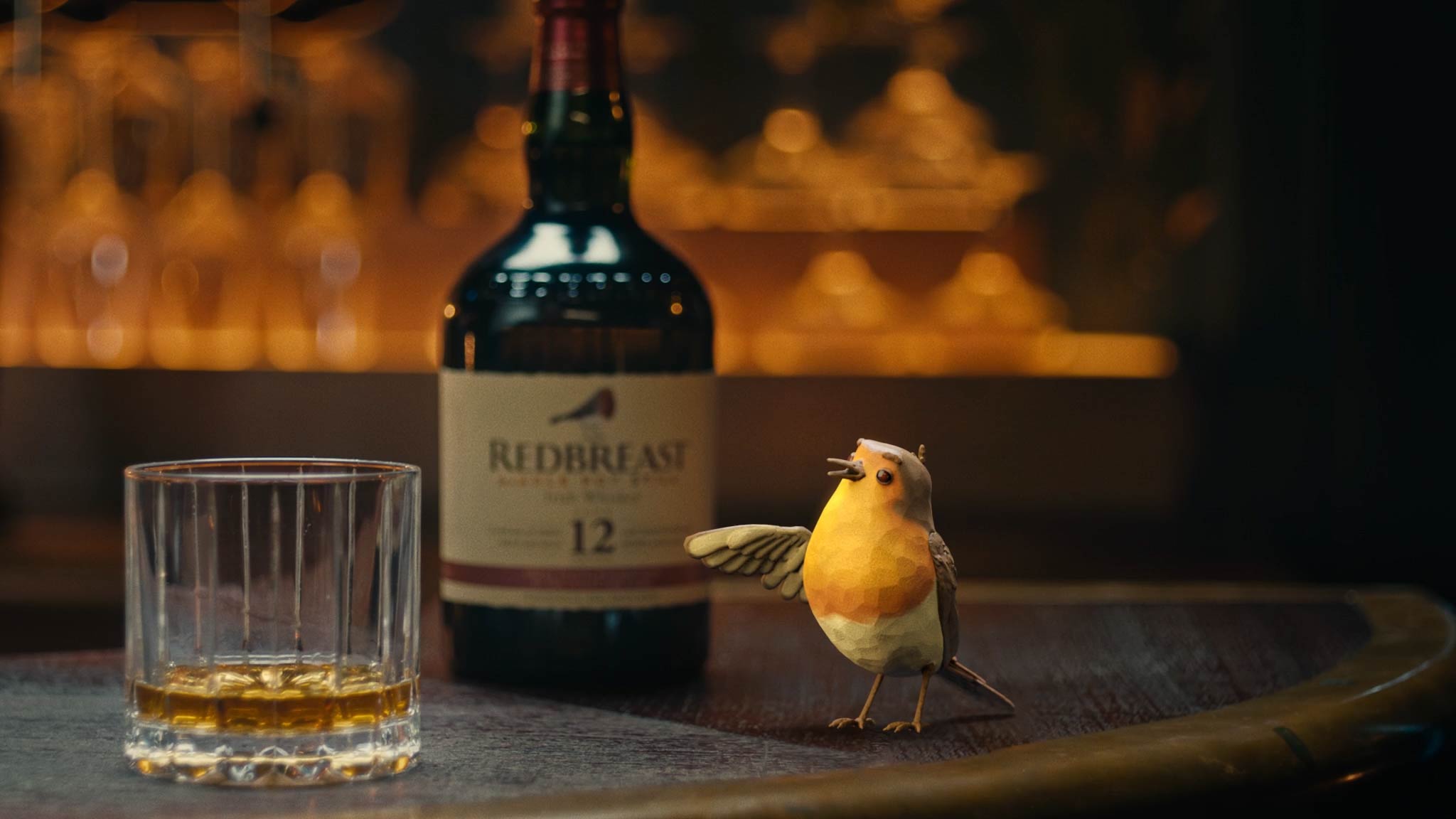

Introducing: Maaike Canne
Maaike Canne is an artist and illustrator based in Rotterdam, NL, whose work seamlessly bridges murals, oil paintings, and digital designs. Inspired by modernist architecture, interiors, design, and nature, her bold and colourful compositions explore the fascinating interplay between interior and exterior spaces. We sat down with her to explore her inspirations, her journey so far and how she creates the hint at a human presence in her works—like someone has just stepped out of view...
Tell us a bit about yourself? What’s your story?
I’m 33 years old, born in the south of the Netherlands (Bergen op Zoom), and now living and working in Rotterdam. For as long as I can remember, art has been a central part of my life. As a child, I carried a little red briefcase filled with pencils and paper everywhere I went. My grandmother, a painter, nurtured my creativity with her inspiring studio and magical garden. Those early experiences sparked my love for creating, and by my teens, my sketchbooks (I still have many from that time) were filled with song lyrics, cutouts, and illustrations, blending two of my passions: art and music.
I studied illustration at St. Joost in Breda, graduating in 2017. That same year, I launched my own business, which later became my full-time career.
One of my favorite pastimes is visiting flea markets and thrift stores, hunting for treasures that tell a story or spark an idea. I also enjoy finding new music, going to concerts, and exploring Google Maps. I have a collection of unusual/fun discoveries on googlemapsandme.com . I watch a lot of YouTube. I like diving into true crime stories, old house renovations, or interior makeovers. Every morning starts the same way: playing some Animal Crossing with a cup of coffee, a great warm-up for running my actual life.
If I weren’t an illustrator, I’d probably be a secondhand furniture dealer, a prop and film set designer (preferably for period pieces), or a prop stylist. I’ve also thought about becoming a home organizer like Marie Kondo or clearing out old houses—anything that involves uncovering hidden stories or breathing new life into forgotten objects.
I also curate exhibitions at Man Met Bril Koffie in Rotterdam. My work draws inspiration from many sources: the serene beauty of Japan, the bold lines of architecture, the vastness of nature—from American deserts to still lakes—and the stories embedded in history and old objects. Spaces and their narratives fascinate me. My work often feels timeless, blending vibrant colors with a quiet sense of stillness.

Your illustrations have such a lived-in warmth, do you take inspiration from your own living spaces?
I'm not sure if my living space directly influences my creative process, but it definitely mirrors the kind of work I produce. My home is a blend of old and new—vintage finds mixed with modern design. I enjoy combining different textures and styles, and I surround myself with personal items I’ve collected over time, like books, travel souvenirs, records, and bottles of wine, glassware. These things contribute to the lived-in, warm atmosphere. Wood, with its natural grain and warmth, plays a big part in creating a cozy, welcoming vibe, and that sense of character often carries over into my illustrations. Everything around me somehow feeds into the work I create.
What draws you to exploring the relationship between inside and outside spaces within your illustrations?
This started with my love for Japan. In Japan, the relationship between interior and exterior is deeply rooted in their cultural, architectural, and aesthetic philosophies. It’s not just a design trend; it’s a way of life that connects people with nature. It’s about harmony and tranquility. In Japan they have what you call ‘Transitional Spaces’. There’s a feature called "engawa"—a wooden porch or corridor that connects the indoor space to the garden or external environment. This transitional space allows the indoors and outdoors to merge, offering a flexible experience where the boundaries blur. Japanese minimalist architecture often involves using natural materials that not only complement the interior but also connect to the exterior environment. The simplicity of design reduces visual barriers, allowing the outdoors to feel like an extension of the interior. I can go on about this.. I love everything about this and I find it so inspiring.


Your illustrations have been used across murals, print packaging, and digital - how do you approach these briefs differently based on where they’ll live?
When creating murals, I focus on making bold, impactful designs that work at a large scale, ensuring they’re balanced and readable from a distance. The wall’s texture influences the level of detail and medium I can use, while the artwork’s relationship to the space is key.
For print packaging, I prioritize color contrast to make the illustration stand out. It needs to align with the brand’s identity and target audience, so I collaborate closely with the branding and marketing teams. I also consider how the illustration interacts with text and logos to maintain readability and balance.
Digital illustration allows for quick adjustments without starting over, saving time compared to analog methods. The ability to easily pick and change colors and use various brushes and textures offers endless flexibility. While I reserve analog painting for personal projects, I can replicate its look in digital form if desired. No matter the medium, my goal is to tell a story, ensuring the illustration is cohesive and true to my style.
What are your favourite types of locations to illustrate?
My favorite locations to illustrate are the places I’d love to live in—warm, inviting environments with a calm and peaceful vibe. I’m particularly drawn to architectural spaces that feature strong horizontal and vertical lines, as I love the sense of structure they provide. I also enjoy illustrating spaces where modernism meets nature—places with large windows that bring the outdoors in, and thoughtfully chosen furniture that enhances the atmosphere. Japan is another recurring location in my work, since it’s all a reflection of places I like to be.
Your illustrations allow for the audience to travel with you, what do you hope they take from your designs?
My goal is to create scenes that feel both welcoming and intriguing, where the audience can picture themselves. I hope to spark a bit of daydreaming—bringing back memories of past travels, inspiring dreams of future adventures, or just making them think of a place they’d love to visit.

You take a lot of inspiration from architecture, do you have a favourite architectural style or era that influences your illustrations?
I’m inspired by the repetition and order in architecture and styles that harmonize with nature. Architectural movements that resonate with me include Japanese architecture, particularly its embrace of wabi-sabi and natural materials, as well as functionalism, international style, and Bauhaus for their clean lines and focus on practicality. I also love California and Scandinavian modernism for their seamless integration of indoor and outdoor spaces. And, of course, mid-century modern is an enduring favorite. These styles not only influence my illustrations but also inform my approach to balance, and composition.
You frequently illustrate living spaces, but often without living characters, how do you keep your designs feeling full of life in a more abstract sense?
When I include characters, the narrative becomes more specific, telling a particular part of a story. However, I enjoy leaving the story open-ended, allowing the viewer to insert themselves into the scene and imagine their own interpretation. I find that if I draw, say, a middle-aged man, it may be harder for a young woman to envision herself in that moment, which sometimes feels like a missed opportunity. That said, I do incorporate people into my illustrations at times—sometimes it's a deliberate choice to add more storytelling or simply to enhance the scene. I'm perfectly fine with that approach too!



People-watching is often a big source of inspiration for illustrators when designing characters. Do you find you have a version that revolves around observing the interactions between buildings and outdoor spaces?
I love seeing how structures fit into their surroundings—how light and shadow change the feel of a space or how buildings either blend in or stand out against nature. For example, a sleek modern building in a forest really highlights the contrast between something human-made and the natural world.
Buildings also tell stories. I enjoy imagining what life was like when a building was first constructed—how people lived around it and what it meant to the community. There’s something special about feeling that history while looking at the architecture.

How do you get into the frame of mind to create your illustrations?
To get into the right mindset for creating my illustrations, I start by sitting down at my desk in the studio, behind my computer with a notebook and pen. In the early stages, I need clarity to think, and I find that brainstorming new ideas works best for me in the morning—I’m a morning person. While writing down ideas or sketching, I prefer listening to music that doesn't have many lyrics, like jazz, dream pop, or synthesizer music. (If you're curious to know the kind of music I’m into, here’s a playlist of my most listened-to songs of 2024)
I almost always listen to podcasts when I’m drawing. I enjoy politics-related podcasts, as well as ones about history, geography, and true crime (some favorites include (De Grote Podcastlas, Explore With Us, Eleonor Neale, Stuff You Should Know, and Dark History). I’m also consistently following American politics. There are a few podcasts I listen to daily, though most of them are in Dutch. My favorite Dutch podcast is Wat een Week.
For research, I write down some ideas and dive into Google and Pinterest for reference images or articles. I save a selection of visuals that catch my eye and then explore ways to merge different elements. It might be the shape of a tree from one image or the style of a couch from another. I blend these inspirations together, filtering them through my own creative lens to make something uniquely my own.


What’s your favourite thing about being part of a creative community?
Being part of a creative community, whether online or offline, is incredibly inspiring. Being surrounded by creative minds pushes me to explore ideas I might not have considered on my own. I love looking at art and reflecting on why a particular piece resonates with me—or why it doesn’t. These moments of introspection often spark new ideas or new directions for my work.
Beyond inspiration, being part of a creative community is a fantastic way to learn new skills and discover helpful tools—whether it’s finding new brushes, exploring useful websites, or picking up new techniques.
Because illustration is often a solitary job, having like-minded people around is so important. They understand the highs and lows of the creative process and the unique challenges that come with working independently or working for certain clients. It’s nice to share advice, brainstorm ideas or solutions together, and celebrate each other’s successes.
Lastly, any dream clients or types of project?
In the world of architecture, interior, and design, some dream clients for me include Vitra, Herman Miller, Flos, HAY, Artemide, and even IKEA. I’m also drawn to travel-related projects, such as working with resorts, hotels, or unique Airbnb spaces—projects that combine design with experiences. I’d also love to do more nature-related projects.
Beyond that, I’d love to collaborate with brands like Moog, Hermès, Rimowa, Apartamento, Aesop, Kiehls or Warby Parker. These brands all have a distinct identity and I love their aesthetics, which makes them incredibly inspiring to work with.



What We Do
We specialise in bold visual content and brand storytelling.



